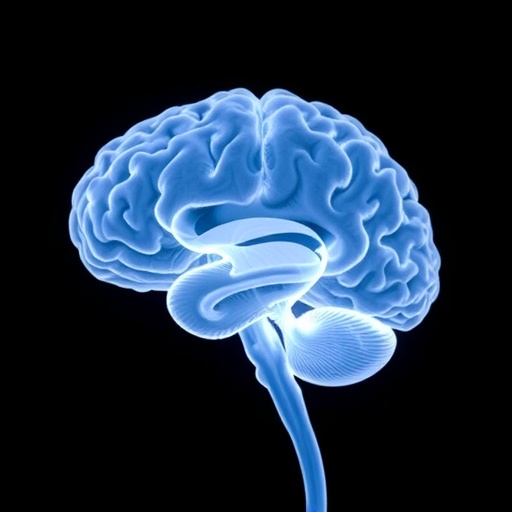In the realm of childhood maltreatment, neglect remains the most insidious and overlooked form, despite its profound impact on development and mental health. Unlike physical or emotional abuse, neglect is characterized by the omission of essential caregiving elements, such as adequate nourishment, protection, and supervision. This chronic deprivation subtly but irreversibly undermines a child’s growth, often without outward signs or immediate behavioral issues, making it exceptionally difficult for caregivers and professionals to detect and address in its early stages. Recent advances in neuroimaging have now unveiled compelling evidence that neglect leaves tangible, measurable imprints on the developing brain, offering new hope for early detection and intervention.
A groundbreaking study led by Professor Akemi Tomoda of the University of Fukui, Japan, has provided the first clear neuroanatomical evidence linking neglect alone—excluding physical and emotional abuse—to specific alterations in white matter microstructure in children’s brains. Published in the July 26, 2025, issue of Scientific Reports, this observational study employed diffusion tensor imaging (DTI), a sophisticated MRI technique that maps the diffusion of water molecules along white matter tracts, revealing the integrity and organization of these critical neural conduits. By focusing exclusively on children who experienced neglect without other maltreatment types, the researchers isolated the unique signature of neglect on brain development—a domain previously shrouded in uncertainty.
The study cohort comprised twenty-one children identified as neglected and 106 typically developing controls. Analyses concentrated on fractional anisotropy (FA) and axial diffusivity (AD), indices derived from DTI that quantify the directional coherence and quality of white matter fibers—essential for efficient neural communication. Intriguingly, neglected children exhibited larger white matter fiber tracts in specific brain regions, accompanied by significantly elevated AD values. These subtle yet meaningful microstructural abnormalities challenge prior assumptions that neglect’s impact is merely behavioral or psychosocial, underscoring its critical neurodevelopmental implications.
Three pivotal white matter pathways were predominantly affected: the right corticospinal tract, the right superior longitudinal fasciculus, and the left cingulum bundle. The right corticospinal tract, essential for voluntary motor control and coordination, showed aberrant integrity indicative of potential deficits in motor skills development. The superior longitudinal fasciculus, a bidirectional connective tract implicated in higher-order cognitive functions including attention regulation, language processing, and executive control, also manifested marked microstructural changes. Alterations in this fasciculus suggest compromised neural circuitry underlying cognitive sophistication and adaptive behaviors. Finally, the left cingulum, integral to emotional regulation and the integration of limbic and cognitive information, revealed abnormalities that could underpin the emotional dysregulation frequently observed in neglected children.
Beyond mapping structural differences, the study importantly linked these brain changes with clinical symptomatology, notably conduct problems and behavioral difficulties. This direct correlation not only solidifies the biological underpinnings of neglect-induced developmental challenges but also positions white matter abnormalities as potential biomarkers for early identification of at-risk children. These findings could revolutionize child welfare approaches by introducing objective neurobiological criteria into assessment protocols, enabling interventions before observable behavioral impairments escalate.
The application of diffusion tensor imaging in this context is particularly innovative. DTI permits in vivo exploration of the brain’s connective architecture at a microstructural level unattainable through conventional imaging. By revealing patterns of altered diffusivity along axonal tracts, researchers can infer disruptions in myelination, fiber density, or coherence—hallmarks of compromised white matter health. The elevated axial diffusivity observed signals potential axonal injury or maldevelopment, consistent with the anticipated neurodevelopmental sequelae of early-life deprivation.
Significantly, these insights emphasize that neglect, even in isolation from physical or emotional abuse, inflicts serious neurobiological harm during critical periods of cerebral maturation. Early childhood represents a sensitive window wherein neural circuits are exquisitely plastic yet vulnerable. Deprivation of necessary environmental inputs, such as caregiving interactions and protective stability, can derail normative brain wiring processes, leading to persistent functional deficits. The subtle growth of larger fiber tracts observed may paradoxically reflect aberrant compensatory mechanisms or maladaptive wiring, rather than healthy development.
From a broader societal perspective, the invisibility of neglect-induced brain changes highlights a pressing need to recalibrate child protection systems. Current reliance on behavioral and physical markers is insufficient. Integrating neuroimaging findings into multidisciplinary assessments could identify affected children earlier, tailoring individualized intervention strategies that address neurodevelopmental impairments. Moreover, these brain-based markers offer a quantifiable means to evaluate the effectiveness of therapeutic approaches over time.
Dr. Tomoda and colleagues suggest that continued research into neglect’s neurodevelopmental impact will illuminate mechanistic pathways, potentially unveiling targets for novel pharmacological or behavioral interventions. By dissecting the nuanced ways in which deprivation alters brain architecture, scientists and clinicians can collaborate to design evidence-based support models, enhancing resilience and recovery potential in vulnerable populations.
In sum, the discovery of white matter microstructure abnormalities in neglected children constitutes a paradigm shift in understanding childhood maltreatment. It urges the scientific and medical communities to recognize neglect not merely as psychosocial adversity but as a condition with clear and measurable neurobiological consequences. The fusion of advanced neuroimaging and behavioral science promises not only to enhance diagnostic precision but also to instigate transformative improvements in prevention and care.
As neglect continues to afflict millions worldwide, often hidden from view, this study stands as a clarion call to deepen research efforts and expand clinical vigilance. Early intervention informed by brain-based evidence can mitigate lifelong detriments, offering neglected children a renewed chance at healthy development, emotional stability, and social integration. Ultimately, unlocking the secrets of how neglect rewires the brain may pave the way toward breaking cycles of adversity, creating brighter futures for the most vulnerable members of society.
Subject of Research: People
Article Title: White matter microstructure abnormalities in children experiencing neglect without other forms of maltreatment
News Publication Date: 26-Jul-2025
Web References: https://doi.org/10.1038/s41598-025-13363-y
References: DOI: 10.1038/s41598-025-13363-y
Image Credits: Professor Akemi Tomoda, University of Fukui, Japan
Keywords: Child abuse, Mental health, White matter, Brain development, Neuroimaging, Behavior disorders, Emotional development, Cognitive development, Psychiatry, Pediatrics




